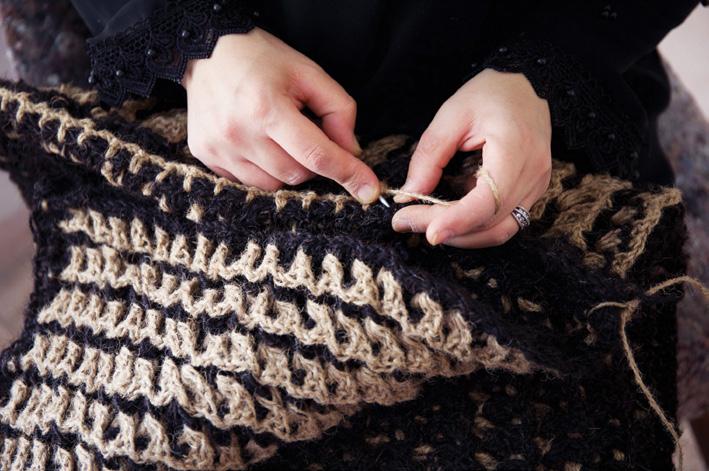
3 minute read
Weaving through space
A quarter-scale prototype of ‘Weaving a Home’.
Photography by Hussam Da’ na

Photography by Tanya Marar
“For me, context has always been at the forefront of all the work that I do. This means responding to the context, reacting to the climate, reacting to the place and its people, and understanding what their needs are and what the gaps are,” she says.
“I come from a Palestinian background – my father is Palestinian, my mom is Jordanian, and this has always been a huge question for me, this idea of identification with space and place,” she adds. “Jordan as a country, where I was born and where I grew up, is built on this foundation – so I’ve been searching for this connection with a place, and what I have realised through my questioning is that home is really about building a community. Sometimes it’s not about a physical place; it’s about who you interact with that makes it a home.”
After receiving her BArch and BFA from the Rhode Island School of Design in 2002, and pursuing her architecture career in luxury retail design and mixed-use developments, Seikaly’s work took a turn to focus more consciously on the objects and spaces that she was crafting. After winning several competitions, including the international Lexus Design Award for her performative structural system that explores the social implications of creating homes for displaced communities, Seikaly positioned her practice more comfortably in the realm of exploration – producing design that aimed to respond to her many questions about the role of architecture and the world as a whole.
Using a process of “thinking through making”, which what happened through building prototypes and researching is that I came back full is a common thread across many of her works, Seikaly circle two years ago, when I really started infiltrating and travelling around the country, began ‘Weaving a Home’. Beginning in 2013, the objective and looking at wool and goat’s hair, and delving deeply into Bedouin tent craftsmanship. of the project was to build a portable shelter for displaced “My approach today is not to only cater to the refugee community – maybe one day communities that provides them with the necessities of I will come back to that – but I think the principle and the objective completely shifted contemporary life through the development of a double- in my head, where I started asking different types of questions: not who and what we layered performative structural fabric in the form of a were building for, but how we are designing and building?” Seikaly explains. dome. Today, ‘Weaving a Home’ has taken on a different Using local resources and the intuitive hands of a community of craftsmen and approach, moving away from its initial target group to women, the new material system merges mechanics and design while drawing look at its wider possibilities. inspiration from traditional tent-crafting methods that have community and
“Since the beginning, I always said that shelter should sustainability at their core. As with all of Seikaly’s projects, the tent aims to synthesise not be imposed on a community; it should be something and interlace the idea between structure and fabric, so that the fabric becomes the that is designed and built with the community with local structure, and the structure is the fabric. resources. Bedouin tents have always been a reference but Resilient and collapsible, the dome represents a continuity in the evolution of place-making that is not linear but rather circular – rooted in the present yet nurtured by its past. While a central part of this process is working with rural communities – with whom Seikaly has established a strong working and personal relationship based on trust, empathy and continuity – she is quick to note that it is not her intention to capitalise on the narrative of female empowerment or community building; terminologies that have become overused, she says, and sometimes even misused in order to secure funding. While it is an important part of the work, it is essentially the by-product of the overall process. “You have to understand that the objective is to come up with a design solution. I’m a designer and an architect – I’m not a charity. Sometimes this is misconstrued.”










